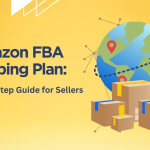Choosing the right platform is one of the most critical decisions a creator will make when launching an online course. This decision involves ensuring a smooth process for instructors and learners. This guide is intended to demystify this decision, provide insights on overcoming challenges, and help educators determine which path to take when teaching children.
Understanding Your Needs
Before exploring platform options, it’s essential to evaluate your needs as an online course creator. Consider your course content, target audience, and required features. If your course includes multimedia or interactive tools, selecting an LMS that supports these functionalities ensures a seamless and engaging learning experience.
Exploring Features and Tools
Platforms are bundled with various features and tools. Some are excellent for video hosting, others for interactive quizzes. Analyzing these areas helps align the platform with essential instructional strategies. Moreover, analytics tools are available to track student progress and gather insights for better course improvement.
User Experience and Interface
Ease of experience plays a significant role in the learning experience. Specific platforms ensure an intuitive and engaging experience, providing clear instructions. Avoiding frustration simplifies usage on both ends—instructors and learners—and increases course completion. By trying out different platforms, you can gauge their user experience.
Customization and Branding
Many instructors also value custom branding. Some platforms even give you more opportunities to brand your courses with logos and color schemes, giving your course its identity. Course layouts can also be customized, allowing teachers to shape the presentation in line with their vision.
Pricing Considerations
The platform you choose depends on too many parameters, but cost is one of the most necessary. Platforms frequently have different pricing tiers depending on your needs and budget. Looking at pricing in support of features just helps assess value vs. price. Many platforms offer free trials or demos so educators can evaluate if they fit their needs before committing.
Support and Community
Getting customer support and community resources will be an asset. With significant backing, platforms that provide strong support are always there to help you troubleshoot any problems, smoothing the work process. Furthermore, there are some great communities of educators where they can exchange experiences and learn, attracting a collaborative ecosystem.
Scalability and National-Level Business
Choosing a scalable platform can secure longevity. Whether that includes enrolling additional learners, launching new courses, or both, platforms built on a scalable architecture can facilitate these aspirations. Growth potential assessment eliminates the need to shift platforms often.
Mobile Accessibility
Mobile accessibility has become essential in today’s world. Mobile-friendly platforms create a better experience for those students who like to learn while on the move. Testing courses on different devices ensures the same experience is available across all platforms.
Security and Privacy
Platforms with good security prevent data loss and ensure compliance with privacy regulations. Educators should ensure the platform has security protocols, giving instructors and learners peace of mind.
Integration Capabilities
If you are an educator building on the potential of a wide range of digital tools, the ability to integrate is a plus. Platforms that allow integrations with commonly used tools facilitate operations with better efficiency. Integration with software like payment gateways, email marketing services, and learning management systems streamlines course administration.
Assessing the Reviews and Testimonials
Reviews and testimony provide valuable insights into the platform’s performance. Peers point out positive and potentially negative aspects to assist decision-making. Evaluating these reviews makes understanding what each platform has to offer easier.
Trial Periods and Demos
Many platforms have trial periods and demo content where educators can explore the features. Trying out the platform in practice eliminates any remaining doubts, as you can see if it fits those needs. These opportunities help ensure the selected platform meets instructional objectives, ultimately helping to decide which platform to use.
Conclusion
Selecting the platform you will use for your online course will require an evaluation of factors. The process involves understanding your needs, reviewing features carefully, considering user experience, and, most importantly, making an educated decision. When choosing an LMS, there are specific aspects such as customization, pricing, support, and security that educators should prioritize when selecting a platform to help improve the learning experience. This decision has the most significant impact on online course success for instructors and students.
Lynn Martelli is an editor at Readability. She received her MFA in Creative Writing from Antioch University and has worked as an editor for over 10 years. Lynn has edited a wide variety of books, including fiction, non-fiction, memoirs, and more. In her free time, Lynn enjoys reading, writing, and spending time with her family and friends.















